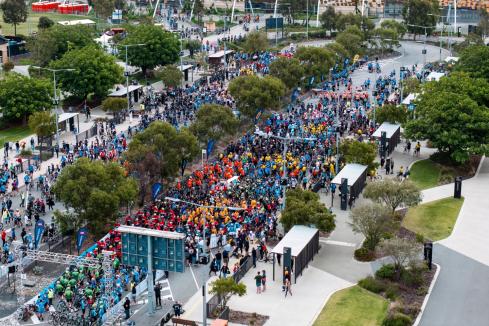A rare grant opportunity has allowed two Perth-based researchers to collaborate on the use of gene-editing tools in cancer treatment.


A rare grant opportunity has allowed two Perth-based researchers to collaborate on the use of gene-editing tools in cancer treatment.
Anna Nowak and Pilar Blancafort had often talked about working together on research.
With Professor Nowak’s background in brain cancer and Associate Professor Blancafort’s in breast cancer, the two were aware of the crossover for both diseases, with the brain being one of the main sites for breast cancer metastasis.
Despite this, the pair believed it was unlikely either would ever receive the funding needed to collaborate.
“Federal grants are focused; either you study one tumour or you study another,” Associate Professor Blancafort, a team leader at the Harry Perkins Institute of Medical Research, told Business News.
However, when the option arose to apply for a grant from the National Breast Cancer Foundation and the Cure Brain Cancer Foundation, the two researchers found they could team up on research into joint treatments for both brain and breast cancer.
“This was the perfect opportunity for us,” Associate Professor Blancafort said.
“We got together and discussed our targets, with the thinking we could expand our ideas.
“We looked at brain tumours, and the idea was, could we extend this rationale we had for one of the genes and see if we could see similar targets to make the application stronger?
“We wanted to cover as many patients as possible.”
Courtesy of the two foundations, Associate Professor Blancafort and Professor Nowak have now been jointly awarded hundreds of thousands of dollars to conduct research over the next four years into improving treatment for the two diseases.
It is the only grant of its sort in Australia, and Professor Nowak said the work would facilitate a cross-fertilisation between these two areas of research and encourage innovative treatments.
“This unique grant opportunity has absolutely catalysed the work we're doing together,” she said.
“It wouldn’t be happening if we didn’t have this money.”
A leading oncology researcher at The University of Western Australia’s School of Medicine, Professor Nowak admits people don’t typically talk about breast and brain cancer in the same breath.
However, treatment for the two can often be similar.
“We have chosen to study breast cancer that has spread to the brain as well as brain cancer partly because both are treated with radiotherapy, which aims to damage the DNA of the cancer cells,” Professor Nowak said.
Currently, the five-year survival rate for breast cancer is 91 per cent.
The figure for sufferers of brain cancer is far lower, having been around 20 per cent for more than 30 years.
“Our approach will hopefully enhance the standard treatment that is used for both cancers,” Professor Nowak said.
With money from the grant going towards full-time researchers, animal resources and gene sequencing technology, a large sum will go towards research into and use of the gene-editing tool CRISPR-dCas9.
“The key here was to find if there were common genes we could target with this technology that were found in breast cancer metastasis and brain tumours,” Associate Professor Blancafort said.
“We wanted to know if we could manipulate genes, and we found around six genes we could target in both diseases.
“That was what this grant was about – joining brain tumour biology with breast cancer research using novel molecular tools.”
The implications for this research extend beyond brain and breast cancer, with Professor Nowak explaining that although radiotherapy and chemotherapy can damage cancer cells, those cells can also repair themselves.
“If we can use our molecular scissors to snip out the repair mechanisms they usually use, we should be able to make radiotherapy much more effective,” she said.
“Unlike therapies that remove one or two repair mechanisms, the unique aspect of these molecular scissors is we can go in and target a whole lot of different repair mechanisms and wipe out their ability to repair themselves.
“If we can demonstrate we can do this in cells and then in mice, the next step will be to deliver it to people safely and see whether it improves how radiotherapy and chemotherapy work.
“We’re about five years away from that, but anything that can improve how our standard treatments work is enormously valuable.”
While Professor Nowak said she didn’t expect results in the short term, she and Associate Professor Blancafort agree they now have a unique chance to improve long-term survival for both diseases.
“We’re oriented towards a cure, and that’s what makes this different,” Associate Professor Blancafort said.
















